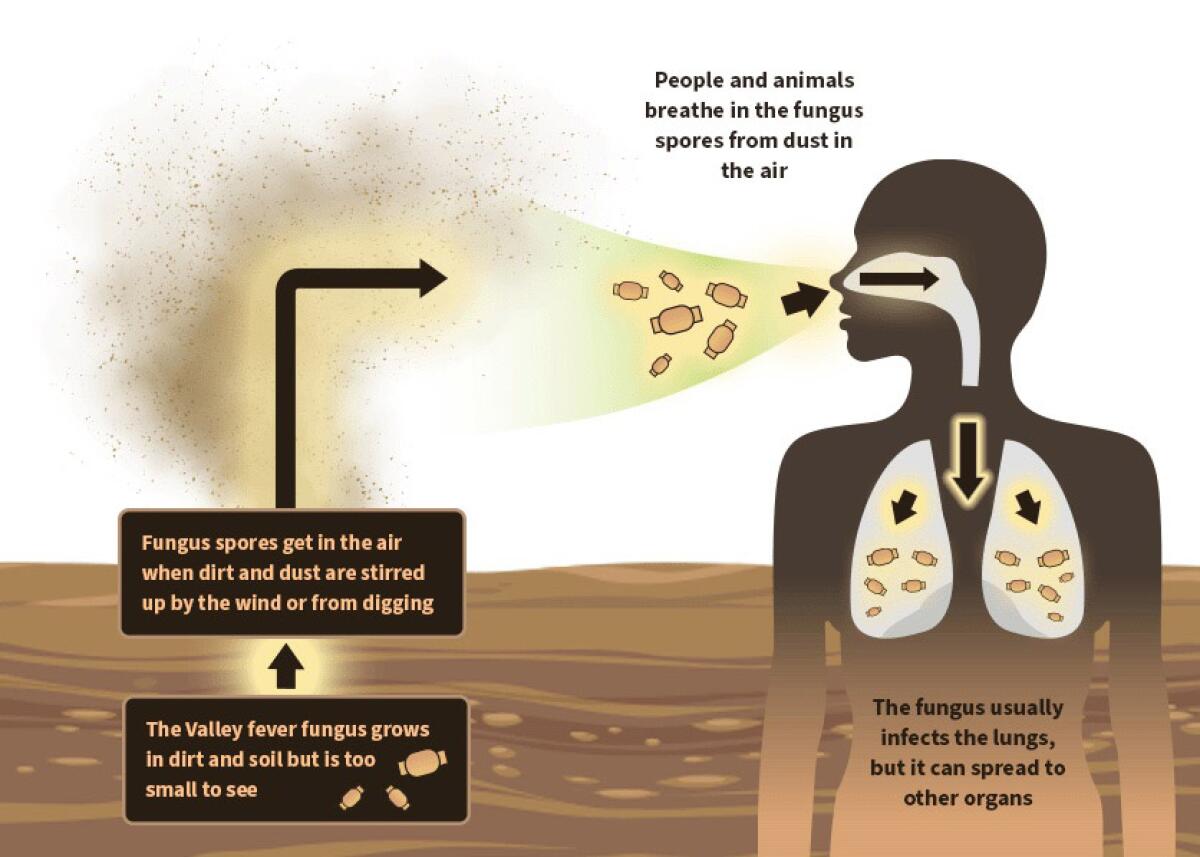Valley fever could hit California hard. The drought-to-downpour cycle is to blame

After California’s record-breaking winter rains, public health officials are warning about an increased risk for valley fever this summer.
“California’s dry conditions, combined with recent heavy winter rains could result in increasing valley fever cases in the coming months,” California Department of Public Health Director Dr. Tomás Aragón said in a news release.
During a drought, the fungus that causes valley fever often is less active, but it grows once the rains return, according to the Department of Public Health. Valley fever cases have been lowest during drought and highest in the years immediately following a drought, raising concerns for this summer and fall after the record-breaking rain that hit California.

Valley fever, also known as coccidioidomycosis or “cocci,” is caused by a fungus that grows in dirt. People and animals can get sick if they breathe in the dust that contains the fungus.
It typically affects the lungs, resulting in symptoms including chest pain, cough, fever and fatigue. Symptoms can last for a month or more.
Since the symptoms overlap with other respiratory illnesses, including COVID-19, lab tests can sometimes be needed to determine whether the infection is valley fever. People who test negative for COVID-19 but continue to experience symptoms for more than a week should speak to a doctor.
Bouts of extreme precipitation, along with worsening drought and heat, are creating more of the dangerous dust, experts say.
About 20,000 cases are reported every year in the U.S., primarily in California and Arizona. Rates are highest in the Central Coast and Central Valley regions, including Kern, Kings, San Luis Obispo, Fresno, Tulare, Madera and Monterey counties. More cases have been reported in the northern San Joaquin Valley and Southern California over the last few years.
People most likely to get infected are those who live or work in areas with high rates of the illness and those who have close contact with dirt or dust. Black and Filipino people, adults 60 years and older, pregnant women and people with cancer, diabetes and conditions that weaken the immune system are at higher risk of severe valley fever.
More to Read
Sign up for Essential California
The most important California stories and recommendations in your inbox every morning.
You may occasionally receive promotional content from the Los Angeles Times.












